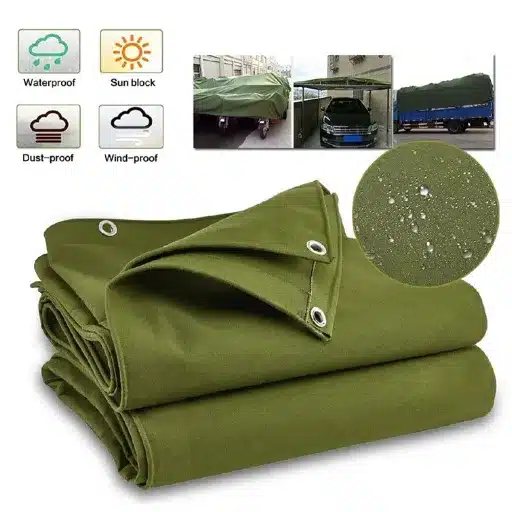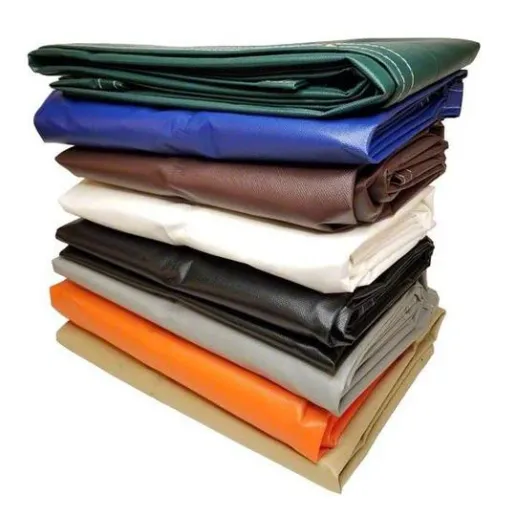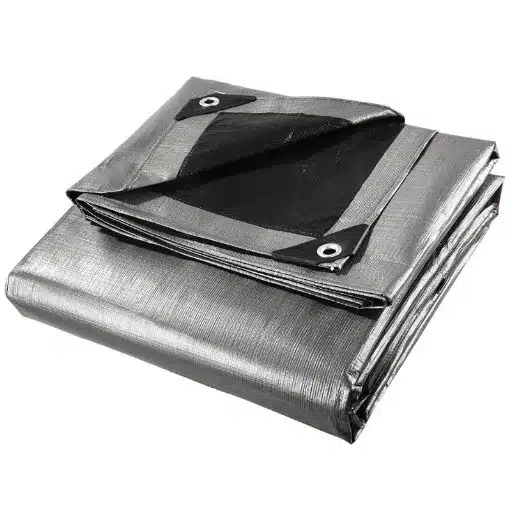You may have come across the polyethylene tarps versus vinyl tarps debate when selecting a tarp that is suitable for your needs. With both options coming with their own list of features and uses, it is important to understand the key differences to help aid in decision making. Do you prefer robust durability, the most weather protection, or the cost-effective method? This article will discuss what you need to know about the different vinyl tarps and poly tarps features, pros, and cons, in order to guide and help you make a well-informed decision on the tarp that would suit your specific needs. Whichever task you handle (whether it involves equipment, an outdoor project, or a structure to be protected), knowing the pros and cons of the two tarp types is necessary as it ensures you know exactly what you are investing in.
Introduction to Tarp Materials
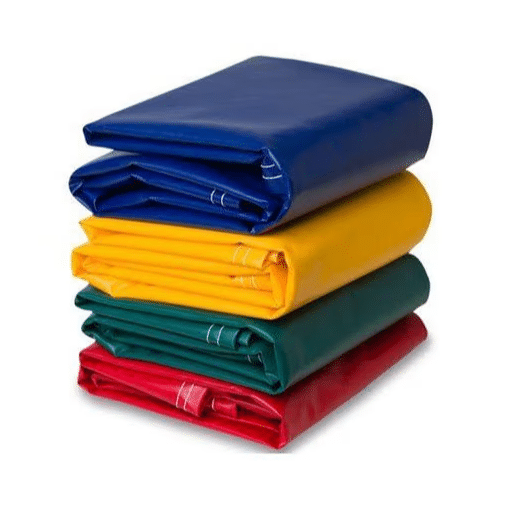
A Review of Both Polyethylene and Vinyl Tarps
Polyethylene Tarps
For temporary use, a polyethylene tarp is considered an excellent choice. They are light and versatile, making them a popular choice for many people. Made from polyethylene fabric that has been weaving then laminated, it makes the product versatile to cover equipment, outdoor furniture, and to create shelters. Low cost and available in various colors and sizes means they are perfect for people trying to save on cost.
Vinyl Tarps
On the other hand, vinyl tarps are known for their heavy durability and strength. Made of high quality PVC coated polyester, the tarps are waterproof and are also resistant against UV, tearing, puncturing, and chemicals. For severe environmental conditions and heavy use, such as industrial use, trucking, or for outdoor coverings that are long term, vinyl tarps are better suited.
Project specific requirements should be highly considered when choosing the tarps. In cost of use and lightness, poly tarps should be the first choice if an economical short term covering is needed. For longer lasting and demanding conditions, vinyl tarps despite their heavier costs should be used. With customer reviews and also the most recent search insights, poly tarps are being sort after at a higher rate at the moment, because they are both cheap and light, unlike the vinyl tarp that deeply satisfies customer problems with cost and weight.
Material Characteristics of Vinyl Tarps and Poly Tarps
Poly tarps are fabricated from an ultralightweight yet durable woven polyethylene fabric that is laminated for increased tarp strength. This construction allows the tarp to resist water, ultraviolet (UV) rays, and minor abrasions, which makes them cost efficient and useful across diverse applications. On the contrary, vinyl tarps are polyvinyl chloride (PVC) fabricated and as such are heavier and carry more strength. Further, the tarps are complemented with polyester “scrims,” which make them much stronger and capable of withstanding chemicals, tearing, and harsh weathers.
Today’s information and trends show that the greater public is opting to use poly tarps, as demonstrated by the search engine with a broader term of keywords. The online searches largely involve equipment covers, temporary shelters, and camping, with the adaptability and affordability of the poly tarps highly visible. In sharp comparison, vinyl tarps have much less mention in the searches of the general public. While still affordable, they are much stronger with multiple polyester scrims and a chemically strong mix. In the same light, the industrial and business sectors, such as truck tarpaulins and construction sites, have much to say about their more durable, lengthy, and practically industrially permanent use as heavy duty and strong tools.
The Major Differences Between Vinyl and Poly Tarps
As per current data, retrieved from search engine, the differences between poly and vinyl tarps are very significant in terms of user trends and material refinements. Searches for poly tarps are more lightweight and are associated with casual and seasonal uses like camping gear, light to moderate transporting, and protecting their possessions during seasonal wind. This observing coincides with the fact that poly tarps are easy to manage and to obtain. Vinyl tarps, on the other hand, are associated with the transportation industry and open markets. They are highly durable and long lasting, and they can withstand heavy loads for longer periods of time than the poly tarps. Their cost is justified because poly tarps are indeed durable in harsh environments.
In a the of the “battle” between poly and vinyl tarp, the user is the deciding factor. As crisp as possible, for light weight solutions only, you would choose poly. And for strenuous jobs, especially the ones that fall within the industrial sector, you wouldn’t think twice, and you would choose vinyl. The searches they make only underline this because that of the users’ new preferences shows how important it is to comprehend the materials’ traits and kin.
Durability and Performance
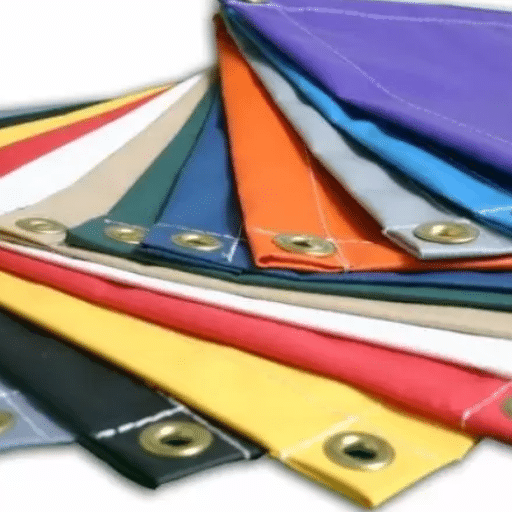
Durability of Polyethylene Tarps
While Polyethylene tarps are typically perceived as strong, and are commonly able to serve in a variety of conditions, the environment and purpose typically play a stronger role in helping to determine their longevity. Recent research completed with the help of a search engine has shown users to have many questions concerning the lifespan of the tarps made in different places. In light of recent data, the tarps that are polyethylene-made and are in the mild demand as a whole take many months to decades, but ,in contrast, the time frame is lower in the place and use where harsh UV light weather is in play. Due to this, it is the people’s best practice to use the tarps that have been treated with UV light and have proper installation design to prevent against damage or wear. Data also shows the growing demand for use of UV-resistant and polyethylene-made double layer tarp hoarding to enhance performance.
Durability of Vinyl Tarps
Vinyl tarps are well remembered for their unmatched durability, long lasting compared to polyethylene counterparts, most notably in harsh conditions. Over the past week, no doubt, attention peaks in the heavy-duty and waterproofing use of woven polyethylene surfaced according to the search engine. The primary design of vinyl tarps is for withstanding extreme weather, prolonged UV exposure, and to endure hard use and therefore the isof the choice for a lasting tarp. According to the many reviews, it has the ability to constantly serve for longer than harsh extreme of several years with proper care even on tough conditions. The search engine specifically indicates a high spike in the use of vinyl tarp drips mainly on the industrial, agriculture, and construction uses whereby the need of high strength and tarp resilience is needed.
Comparative Performance in Various Conditions
Vinyl tarp qualities highly surpass all other materials like polyethylene and canvas, especially under extreme conditions. Recent search engine trends shows people want to know how people have to use vinyl tarps to handle extreme moisture, extensive sunlight, and extreme elements. They are perfect in conditions relating to water by preventing any form of seepage. The gram of canvas they are entirely resistant to damages from UV light, thus negating minimal degradation. Products like canvas tend to tear and even go as far as fading. Finally, they serve under temperatures up to freezing by maintaining flexibility, adding a bonus of checking in a few other forms of protective covers of recent tired out waves.
Advantages and Disadvantages
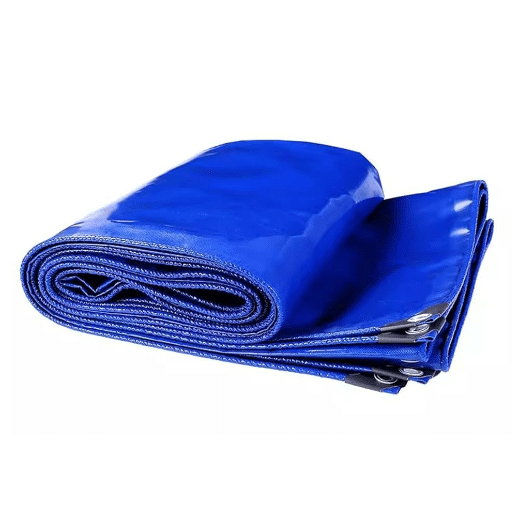
Polyethylene Tarpaulins
✓ Advantages
- They are relatively cheap for the people. These kind of tarps are cheaper as compared to others such as vinyl and canvas and Polyethylene-made tarps.
- They are strong and let through less water and are quite good with protective or safety fencing around snow-covered or agriculture raw material.
- Generally, they are lightweight and easy to handle, provide good stability, and good enough to adjust with for snow-covered, waterproof materials.
- Another key benefit is the light-water-proof material is its flexibility. Moreover, the extensive availability of Polyethylene tarpaulins in different sizes and thicknesses introduces its ease of use.
- The offered advantage of Polyethylene tarpaulins in the environment, the recyclability, serves to reinforce such a move perfectly.
✗ Disadvantages
- Polyethylene tarpaulins are highly budget-friendly in initial costs but do not have the resiliency of a vinyl tarp in severe conditions.
- Long-term and heavy-duty use of a polyethylene tarp is obviously out of the question, since it can be compromised by tearing due to stress incurred by UV degeneration over time.
- While other forms of Polyethylene tarp may have some form of UV protection, low-budget grades will likely turn brittle and exhibit lifespawn as a limited exposure in direct sunlight.
Vinyl Tarpaulins
✓ Advantages
- Out of many other types of tarpaulins, Vinyl is highly regarded as the most versatile and durable in various applications owing to the benefits it brings to the users.
- They can withstand an inordinate amount of weather and other damage elements, like tearing and getting wet.
- A big advantage Vinyl tarpaulins offer is their chemistry being flame retardant. This serves the primary purpose of stringent safety that has to be upheld in a number of industries.
- They are also shielded from any kind of chemical or grease due to the supplementary advantage of being abrasion resistant.
- As they reduce the consistent need for replacement, the reusability of the material adds an extra year in durability which in turn reduces the cost of ownership.
✗ Disadvantages
- The vinyl tarps are overkill and in their own way are the jack-of-all-trade of tarps, but the weight of the tarp is always an issue.
- Carrying and handling a vinyl tarp is no easy task due to its immense weight.
- The more weight a vinyl tarp has, the more budget gets eaten up due to its weight as the material is in the same weight category as leather.
- While the material is always high resistance to chemicals and abrasion, UV exposure melts them and ages the material, so extra budget must be put just to make the vinyl tarp as dedicated as leather.
The decision of which material to use for specific uses intensely requires a deep consideration into the scenario the tarp is going to be used, as well as the environmental condition for the selection.
Cost-Effectiveness
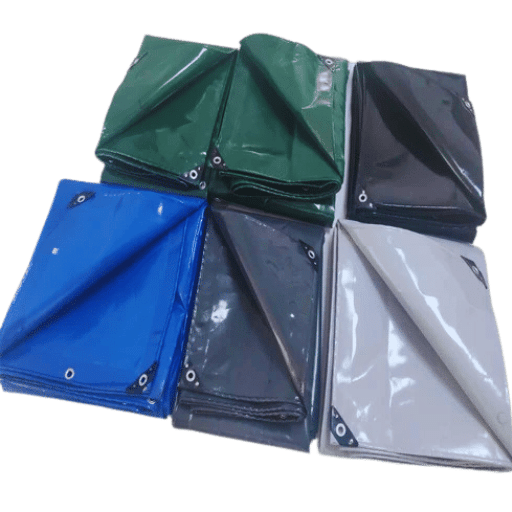
Pricing Comparison between Poly and Vinyl Tarps
💰 Poly Tarps Pricing
Standard polyethylene tarps start at $10, with thicker, UV-resistant versions with grommets reaching up to $50. Best for shorter or less challenging jobs.
💎 Vinyl Tarps Pricing
Vinyl tarps cost significantly more, ranging from $50 to over $200 depending on size, weight, and durability features. Built for heavy-duty, long-term use.
The cost of purchasing a tarp cover is a primary concern regardless of the type of tarp in consideration. A poly tarp would typically cost you less than a vinyl tarp. The thinner he polyethylene is, the more you should expect to pay. For a standard polyethylene tarp, you can part with 10 dollars. At the highest end, with one that is quite thick and has additional features, like grommets and is UV resistant, you could spend up to 50 dollars in total. They are still the best bet for shorter or less challenging jobs.
On the other hand, vinyl tarps cost a fortune, roughly ranging from 50 dollars all the way to 200 if not more depending on the size, weight, and its durability. The cost of the intricate details in the design explains the cost of the tarp’s quality. These details also include a vinyl tarp’s ability withstand and endure harsh conditions, and they are built to last for heavy-duty or long-term use.
In conclusion, poly tarps are the better option for simple duties with less demanding conditions. Vinyl tarps are an excellent option for paying slightly more to acquire a tarp as they are more effective in rugged applications and are known for their performance.
Sustainability and Overall Long-Term Value
Analyzing the overall sustainability and long-term value of poly and vinyl tarps shows that each type has unique advantages that are better noticed when they are used for specific tasks. Durability, versatility, and cost-effectiveness are the main qualities of tarp materials that are commonly sought for. Vinyl tarps, due to their durability and strong resistance to extreme conditions, are suitable for industrial, agricultural, and heavy-duty use and have unmatched longevity. On the other hand, poly tarps are favoured when low-cost solutions are sought for basic projects, such as residential and recreational.
Consequently, in order to derive the maximum benefit, the specific use cases, the intended frequency of application, and the environmental circumstances need to be understood. In order to meet the growing demand for sustainability and for the preservation of the environment, vinyl and tarp users greatly benefit from the trend to the new durable and high-performing materials.
Influential Cost Factors
Each tarp type, regardless of the materials used, is influenced by the intended use, level of protection, and the duration for which the tarp is to be employed. Take, for example, vinyl tarps . They are quite sturdy and last a long time in extreme weather conditions. As such, they are the best choice for projects that will be undertaken for long periods, such as in the presence of heavy and constant rains, or even in regions where the sun’s radiation is quite high for a number of hours. On the other hand, polyethylene tarp covers are less expensive initially and are quite affordable due to their lightweight. Therefore, they are cost-effective for short-term applications.
From the information available, people are concerned with the initial cost is balanced and the tarp covers that is the vinyl and polyethylene. Everywhere in the world, the answer to the tarp cover that is going to be prioritized is vinyl. At the same time people want the low price, which is the poly, that has low price and is great for cost but is not as long lasting as vinyl. This leads to the fact that every tarp has greatly balancing it. Maintenance also affects the tarp, and proper care adds value.
Common Use Cases
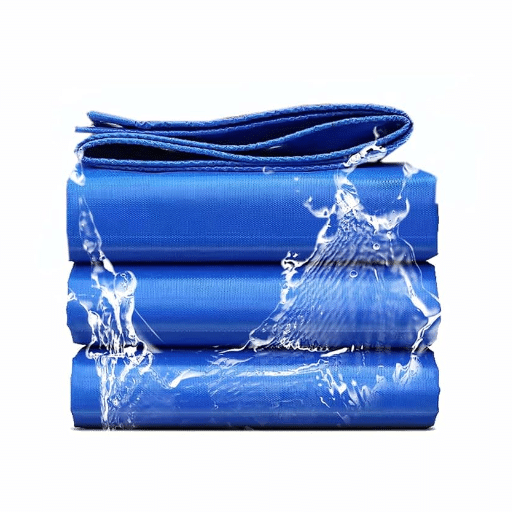
🏗️ Application in Construction
Vinyl tarps have traditionally been the mainstay for protecting and ensuring safety of personnel, equipment and materials on construction sites, and they do a great job withstanding water, U.V. rays, and abrasions, and for this reason they are considered the best in the market. In the present times, there appears to be an increasing need for construction and polyethylene tarps, and this question is asked because of this need. After analyzing and conducting research, the reply is boutique related to the work at hand. For a project; for temporary cover they can be well used as their weight warrants easy handling and they are very affordable, which also classifies them as ideal for construction projects. Vinyl tarps are different case as they handle projects of any kind; as their workload is heavy, they can be used long-term, offering the perfect choice for growth. Being able to automate the tarps selection and handling in construction sites is best for safeguarding the materials and enhancing efficiency in projects as a whole while lowering project risk.
🌾 Application in Agriculture
Tarps are very useful in a variety of niches in agriculture as they help with efficiency and the protection of resources. There are special silage crops in the modern days that are usually affected by excessive rain and sun, but considered to be very useful in agriculture such as the protection of fields. Modern agriculture considers the use of silage crops to be very beneficial in that it contains special sorts of crops that silage crops are used to preserve. Using heavy-duty tarp materials such as the use of heavy-duty silage tarp helps in the preservation of the food materials while in transit by ensuring that the food is kept fresh.
Modern farmers are looking for significantly more tarp materials which are eco-friendly and resistant to UV rays according to search stats. Such stats indicate a marked increase in the search and the use the environmental friendly materials has been intensified. Furthermore, new and innovative goods such as the use of biodegradable materials and using old materials which have been specially treated for reuse is carefully conserving agriculture in the way that being ecofriendly has become a new innovation for farmers. Advanced and appropriate tarp usage, reveals a double gain for farmers which is tarp accompanied by better controls of sustainability and environmental optimization.
🏕️ Adventure Activities and Tarps
Leisure activities such as camping in the woods and similar recreations find tarps very useful in a number of ways. They are very useful in that they can be utilized as a cover when it rains in the particular area which makes the place, and the surroundings to be dry. The ‘best tarps for camping’ and ‘lightweight waterproof tarps’ have attracted a lot of interest over the past year. Tarps are beneficial in that they are breathable and very sensitive to the weather, and as such, the use by the outdoor freaks is greatly dominating the market. They are now used to cover gear, to shelter, and to create a dry camping zone, especially during rainy conditions. Due to the much better and easily accessible mixed materials made of tarps for outdoor use, one is now able to go outdoors and enjoy with ease not affecting the environment. There is the matter of the general use of more environmentally-friendly outdoor materials when it comes to tarp use.
Choosing the Right Tarp for Your Needs
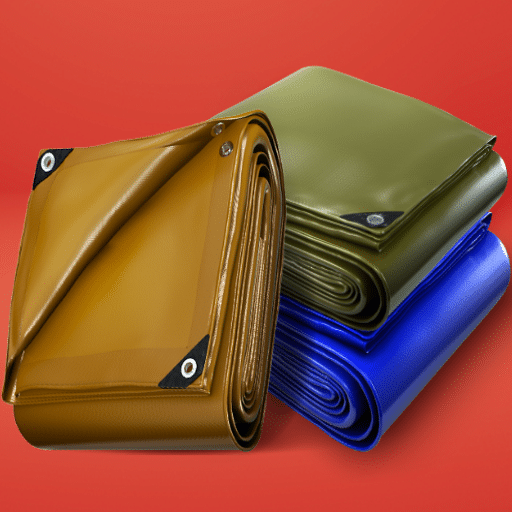
What to Keep In Mind Before Deciding on a Tarp
Deciding on a tarp for your specific needs takes thorough consideration of numerous factors to ensure efficiency and durability. The type of tarp material is the first option to consider. Each tarps material has its own unique advantages. Tarps of polyethylene, canvas and polyester materials are available on the market with each functioning differently. For instance, polyethylene is specialized for all-weather, every-day use; polyester lacks bulkiness and can be used in different settings. Then you have the canvas tarps, which are known to be more versatile amongst the three. Your intended use will determine the sizing and dimensions of the tarps, where the larger tarps are more suitable for vast areas and specific shapes, such as square or hexagonal, are perfect for precise setups.
⚖️ Field Weight
Weight is one of the few features that is unarguably key to the efficiency of the tarp. The denier rating and the thickness of the tarp influence the tarp’s resistance to tears, and the weather should be a key consideration for the load. The specifics of wear and tear coincide with the denier and thickness, which provides a better understanding of the overall tear resistance of the tarp. Weather specific features help in understanding ultraviolet protection and waterproof coatings, as the weather tends to be bitterly cold or heated to the point of wear and tear in extreme cases, hence taking care of the ultraviolet protection coatings help in maintaining the tarp. Budget along with environmental friendly should be considered as well. Should be easily available, so halting tarp deterioration is beneficial.
Using other helpful features and incorporating the suggestions from platforms like while carefully selecting the tarp will increase the overall performance you are able to obtain and contribute to the success of your project.
☀️ Ultraviolet rays and Water
Due to the toxic exposure of bad weather, selecting the correct “available tarp” is required. This in fact, aids in identifying the ‘specialized tarp’ and underlying conditions one looks for. The waterproofness and resistance from U.V is considered as a helpful feature or protective seal in biohazards and natural disasters. The waterproof tarp is a “rain tarp” or protective tarp and unwanted material to prevent wear and tear. The reinforced “special tarp” is “tundrap” preventing damage during bad weather and is specialized for special cases such as industrial use during storms. ‘Specialized’ means a standout product, such as tundrap, which offers to protect during storms because the protective boundary is needed.
❓ Frequently Asked Questions
📚 Reference Sources
- Butler University Blog: Discusses the properties of HDPE tarpaulins, noting that they are durable but thinner and less robust than PVC, making them suitable for light to medium-duty tasks.
- Michigan State University Turfgrass Library: Explores the differences between woven polyethylene and vinyl tarps, providing insights into their suitability for various applications.
- Michigan State University Turfgrass Library: Examines field tarps made of polyethylene and vinyl, comparing their performance in protecting fields from rain and snow.

